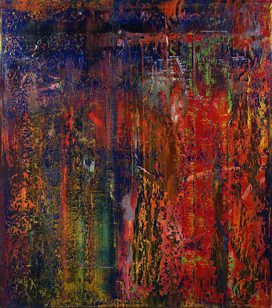January 19 (Sat.)– March 24(Sun), 2013
Collection: Contemporary Art and Themes
While forming a connection to the surrounding environment, art of the last decade or so has evolved on the basis of themes that are significant and appropriate to the era rather than remaining rooted in conventional artistic views. In this exhibition, based on contemporary art perspectives, we present works from the museum collection that focus on six areas: Everyday Life, Appropriation and Influence, Color, Chance, The Written Word, Circumstances.
1. Everyday Life
The links between the production of art and everyday life became stronger after World War II, and grew even more conspicuous in the 1990s. This included not only new methods that used ordinary things as materials but also works that focused on the state of everyday life. Today, this is one of the keys to art.
2. Appropriation and Influence
The widespread practice of "stealing" or using other artists' images peaked in the '80s. Since that time, a wide range of connections has been made with works of the past, and the relationship between art of the past and the present far surpasses mere influence.
3. Color
Color has been a major theme in visual art since the modern era. This is by no means limited to color as a subject of research. In the contemporary era, special attention is also paid to the color of readymade articles. Color is not merely an aesthetic quality but also has cultural and social significance, making it a special element of an art work.
4. Chance
Early 20th century trends such as Expressionism and Surrealism were notable for the introduction of chance in art, and this element has again become a key to art today. It is possible detect reality in these unpredictable events instead of the artist's acts.
5. The Written Word
The use of the written word was a decisive development in visual art of the 20th century. The trend began with Cubism and Duchamp's work in which the idea took precedence over the appearance, and continued in a variety of conceptual experiments during the 1960s and '70s.
6. Circumstances
Since the 1960s, a special focus has been placed time and space in art. Along with the special qualities of a place and the relationship between an act and a place, the role of people, including the artist and the viewer, has become a key element in the production and development of art.

Gerhard RICHTER ≪Abstract Painting (648-1)≫ 1987
The National Museum of Art, Osaka
Opening Hours
10:00–17:00, Fridays until 19:00
Admission until 30 minutes before closing
Closed
Mondays (Except February 11, a national holiday) and Tue., February 12
Admission Fee
Adults : 420 Yen (210 Yen)
University students : 130 Yen (70 Yen)